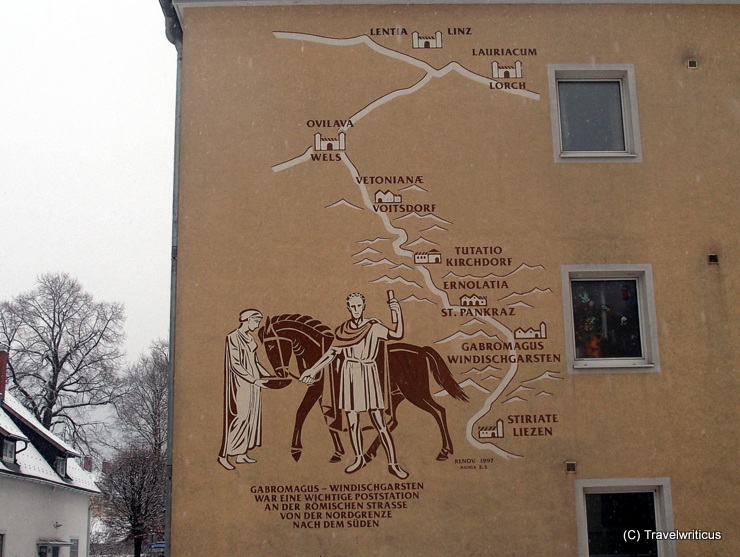
This mural at a building in Windischgarsten shows some ancient Roman places along a local part of the Via Norica. During Roman times Windischgarsten was a stopping place (mansio) at this road named Gabromagus or Gabromagi.
You only see what you know (Goethe)

This mural at a building in Windischgarsten shows some ancient Roman places along a local part of the Via Norica. During Roman times Windischgarsten was a stopping place (mansio) at this road named Gabromagus or Gabromagi.
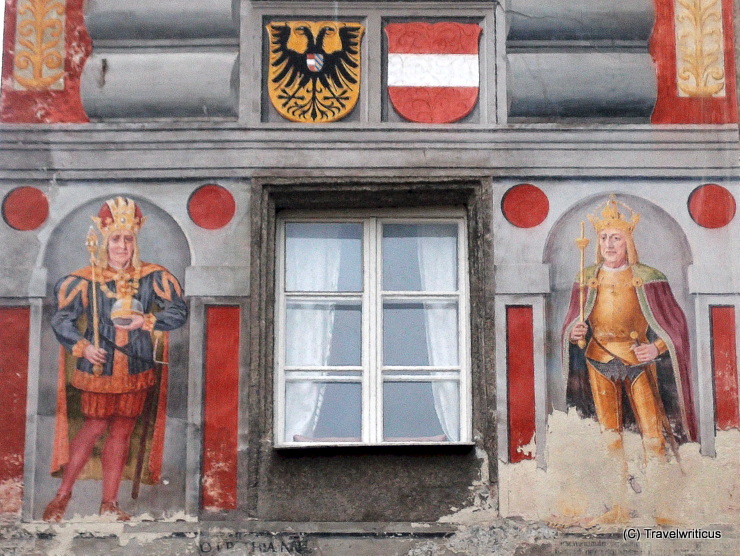
This wall painting located at the northern side of the Blumauerhaus in the city of Steyr shows emperor Frederick III (Friedrich III.) and his son Maximilian I. The building is named after Aloys Blumauer who was born there in 1755.
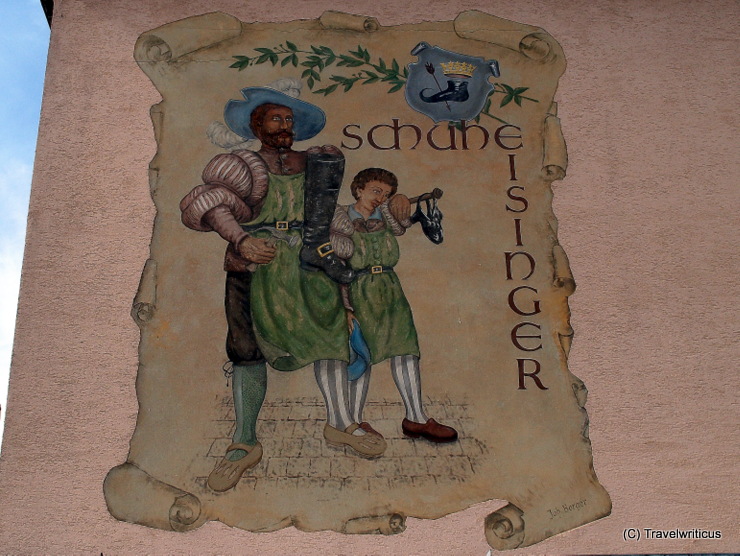
This huge mural promotes the shoe shop Eisinger (Eisinger Schuhhaus) located at the Brunngasse 11 in Poysdorf.
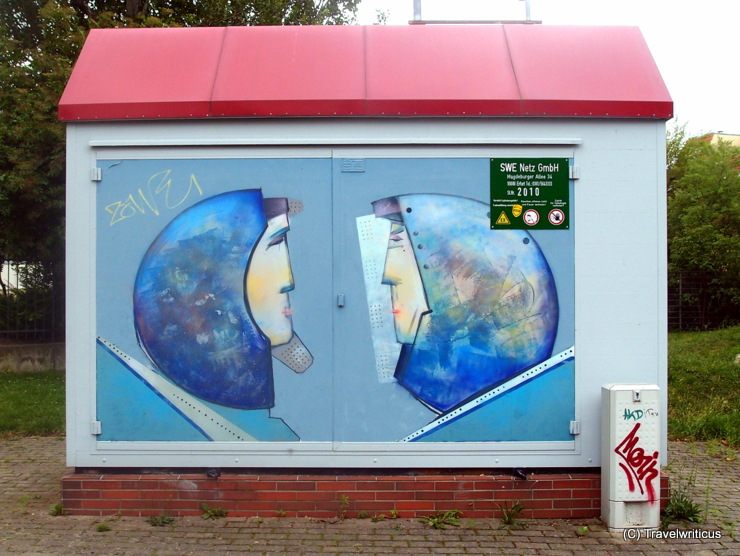
Street art seen at a station of the local power supply company near the old city wall of Erfurt. I suppose these two guys are astronauts or – speaking in terms of East Europe – cosmonauts. It happens to be I came across more than one time such depictions of cosmonauts in Erfurt.
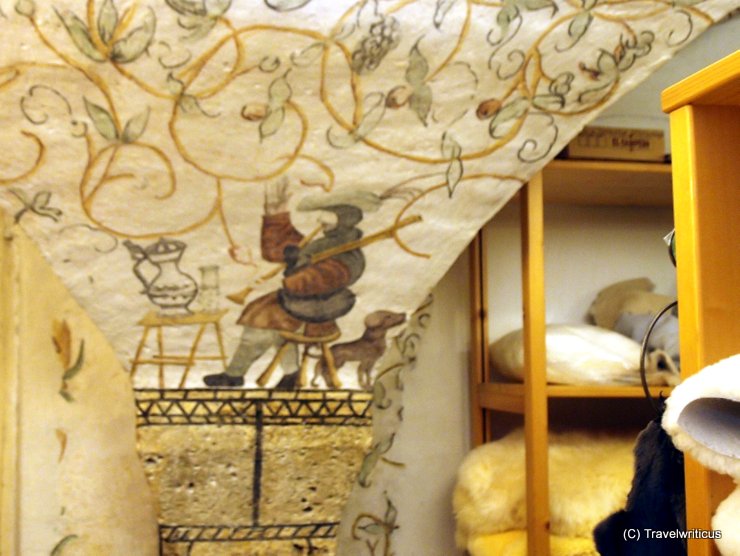
Since 1422, tanners have been working at the address Lederergasse 5 in Salzburg. At the same address, there is still a shop run by the family of Schliesselberger selling goods made of leather.
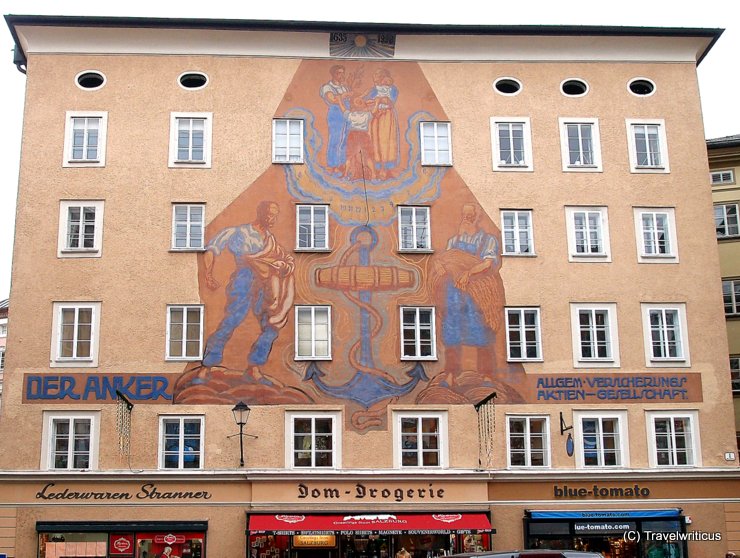
Huge sundial seen at the Ankerhaus in the city of Salzburg. The house is named after the insurence company DER ANKER (engl. the anchor). In earlier times the building housed the hotel ‘Erzherzog Karl’ where famous persons like the Austrian Empress Elisabeth of Austria (‘Sisi’) or the German Minister President Otto von Bismarck used to stay.
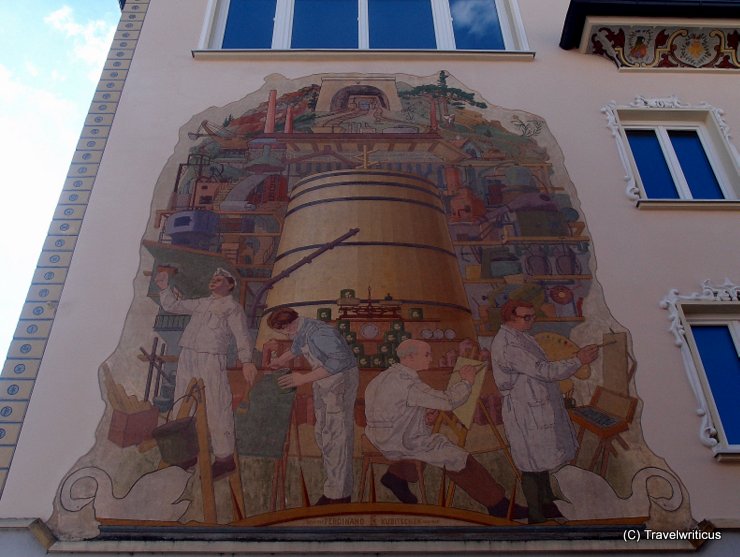
This mural in Bischofshofen was created by Ferdinand Kubitschek in 1967. Besides the big scale of the mural I was also impressed by the beautiful decorated soffit you can see in the upper right corner of this picture.
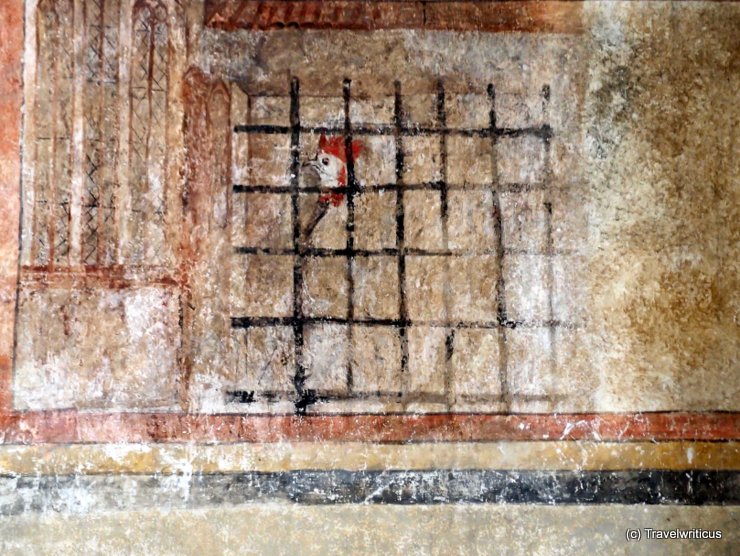
At St. Jodok Church (Pilgerkirche St. Jodokus) this depiction of a caged-up chicken made me smile. It is part of a large fresco telling a legend in Germany generally known as Hühnerwunder (chicken wonder).
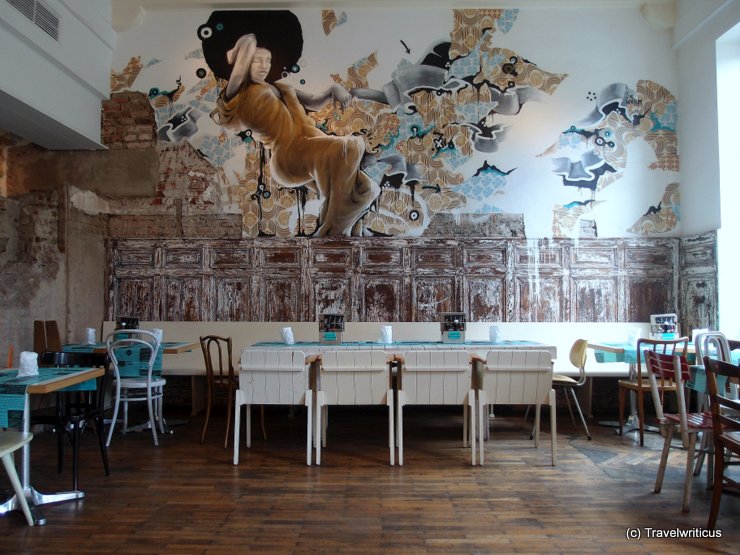
The restaurant Speisesaal is located on the ground floor of Hotel Wiesler. I think it is an ideal venue for having a burger or steak while listening to music presented by a DJ.
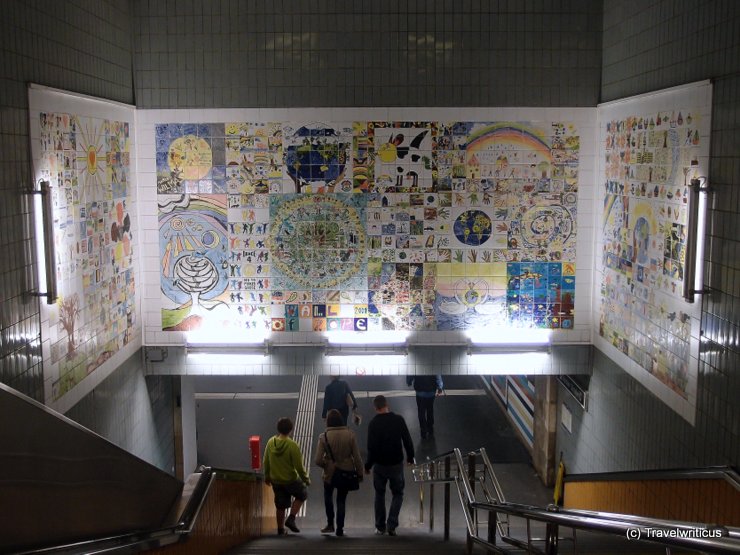
At the railway station Matzleinsdorferplatz one can see this artwork made of ceramic tiles. Students of about 20 Viennese schools put down their dreams and hopes for the 21st century in this artwork.
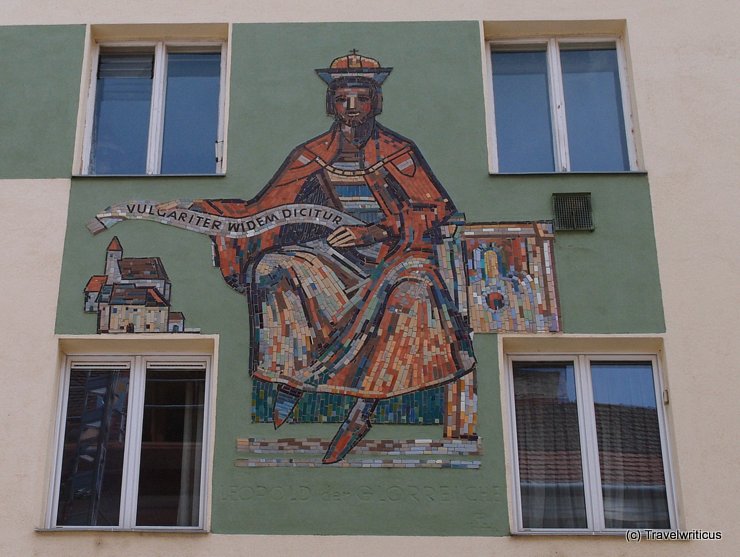
This mosaic on the Karolinengasse 31 (4. District, Wieden) shows Leopold der Glorreiche (Leopold the Glorious). He ruled as Duke of Austria from 1198 to 1230. This mosaic in Wieden reminds us that the district name was first mentioned in a deed of donation by Leopold (‘Vulgariter widem dicitur…’) in 1211.
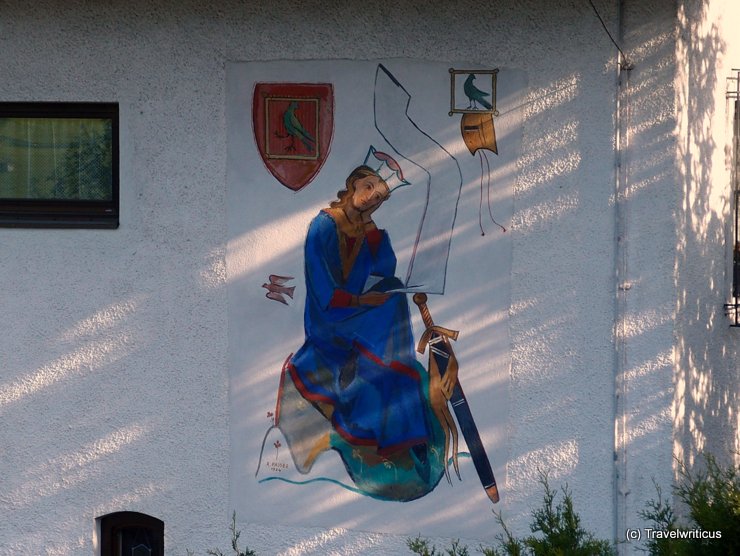
This mural at a private home in Lermoos (Tyrol) is showing the probably most famous portrait of the singer Walther von der Vogelweide.